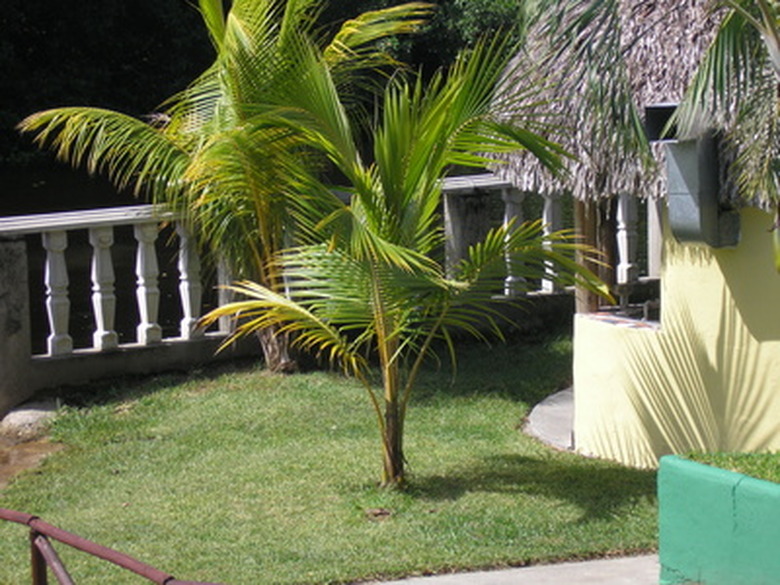Triangle Palm Diseases
The triangle palm tree is a Madagascar native that thrives in full sun and warm climates. This palm grows up to 30 feet tall with bluish-gray leaves and a feathered crown shaft. It is a hardy and tolerant tree that can withstand drought periods, flooding conditions, wet feet and cold temperatures down to 26 degrees Fahrenheit. Though tolerant to varying conditions, the triangle palm tree is susceptible for several diseases, some of which can be fatal.
Pink Rot
Pink rot, or Gliocladium blight, is a fungal disease that targets stressed and weak palms. Using microscopic spores, this fungal disease infects the fronds and stems of the triangle palm. As the disease progresses, the infection spreads onto the trunk and base of the tree. Infected trees will display yellowing fronds with blackened stems. Lesions will develop upon the stems and ooze a gummy discharge. The infected tissue will develop a pinkish colored mass that covers the area. The disease can be controlled with the removal of infected fronds, in combination with a fungicidal spray designed for palm protection. Infected fronds should be trimmed from the tree using sharp, sterile shears to promote healing and prevent further damage.
- The triangle palm tree is a Madagascar native that thrives in full sun and warm climates.
- The disease can be controlled with the removal of infected fronds, in combination with a fungicidal spray designed for palm protection.
Fusarium Wilt
Fusarium wilt, scientifically referred to as fusarium oxysporum, is a causal fungal disease that targets a large array of vegetation, including the triangle palm. This disease infects the palm through its vascular system. The youngest fronds of the triangle palm will be infected first. These palms will display signs of vascular clearing, followed by wilted and drooping. Mature fronds will show symptoms next with yellowing and browning of the fronds. Young palms often die soon after the drooping begins. Although mature triangle palms can withstand longer periods of infection, these trees will encounter extensive yellowing, defoliation and necrosis of fronds. Triangle palms that have been infected with fusarium wilt cannot be saved and should be properly destroyed.
- Fusarium wilt, scientifically referred to as fusarium oxysporum, is a causal fungal disease that targets a large array of vegetation, including the triangle palm.
- Although mature triangle palms can withstand longer periods of infection, these trees will encounter extensive yellowing, defoliation and necrosis of fronds.
Lethal Yellowing
Lethal yellowing, commonly referred to as LY, is a widespread disease throughout the palm species, including the triangle variation. This disease develops vigorously during mild winters and transfers through phytoplasma, which infects the inner tissue of the palm. The symptoms of lethal yellowing are quite similar to other palm diseases, including the yellowing and browning of fronds, growth stunt, dieback and dropping. Differences in symptoms include the yellowing of older fronds first and the rapid decline and death of the infected fronds. Though a combined treatment of fungicidal and insecticidal sprays can slow the spread of the disease, infected trees cannot be cured. Infected trees should be removed immediately and properly discarded to prevent the spread of the disease to nearby trees.
